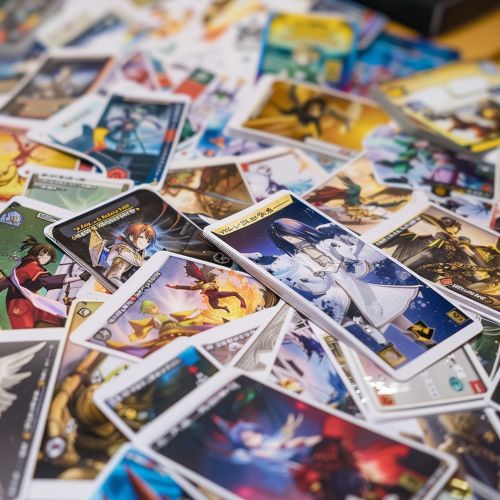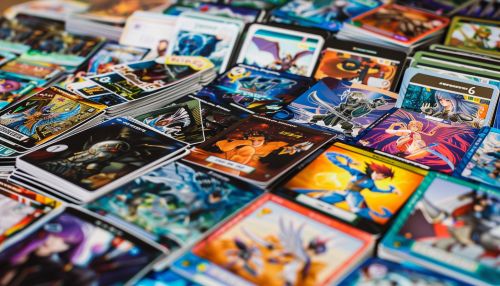Collectible card game
Overview
A collectible card game (CCG), also known as a trading card game (TCG), is a type of card game that originated in the early 1990s. These games typically involve players building their own decks and competing against each other using a unique set of rules. The cards in these games are often sold in randomized packs, and are collected and traded by players in order to build their decks.


History
The concept of collectible card games was first introduced by the game Magic: The Gathering, which was created by mathematician Richard Garfield and published by Wizards of the Coast in 1993. This game was the first to introduce the concept of players building their own deck from a larger pool of cards. The success of Magic: The Gathering led to a boom in the creation and popularity of other collectible card games.
Gameplay
The gameplay of a collectible card game involves players building their own deck of cards and using them to compete against other players. The specific rules and mechanics of gameplay can vary widely between different games, but most involve some form of combat or competition between players, and the use of strategic decision making. Some games may also include elements of chance, such as dice rolling or card drawing.
Deck Building
One of the key aspects of collectible card games is the concept of deck building. This involves players selecting a certain number of cards from their collection to form their deck, which they will use in gameplay. The process of deck building involves strategic decision making, as players must consider the strengths and weaknesses of their cards, as well as their synergies with other cards.
Card Rarity
In most collectible card games, cards are categorized by their rarity. This is often indicated by a symbol or color on the card. Rare cards are typically more powerful or versatile than common cards, and are therefore more sought after by players. The rarity of a card can also affect its value, with rare cards often being sold or traded for higher prices.
Competitive Play
Many collectible card games have organized play systems, where players can compete in tournaments and leagues. These can range from local events at game stores, to large international championships with significant prize pools. Competitive play often involves specific rules and restrictions on deck building, to ensure a level playing field for all players.
Digital Collectible Card Games
With the rise of digital gaming, many collectible card games have been adapted into digital formats. These digital collectible card games (DCCGs) often replicate the gameplay and mechanics of their physical counterparts, but may also introduce new elements that are unique to the digital medium. Some popular DCCGs include Hearthstone, Magic: The Gathering Arena, and Gwent.
Impact and Influence
Collectible card games have had a significant impact on the gaming industry, and have influenced the design of many other types of games. The concept of collectible elements and strategic deck building has been incorporated into many video games and board games. Additionally, the success of collectible card games has led to the creation of other types of collectible games, such as collectible miniature games and collectible dice games.
